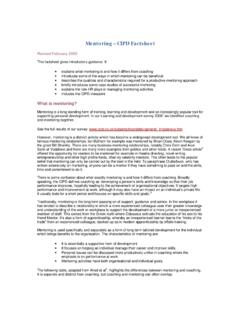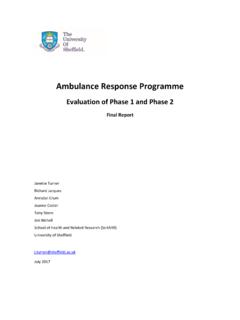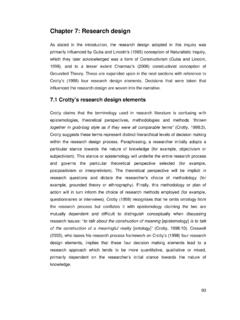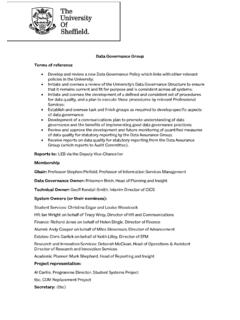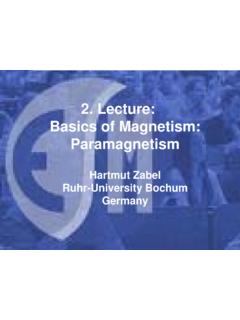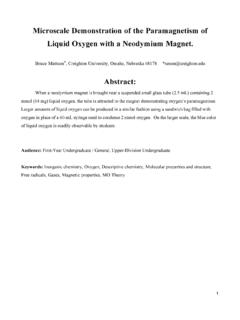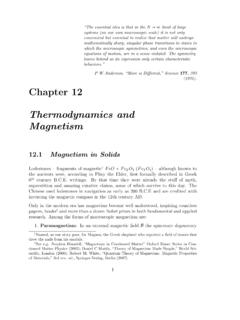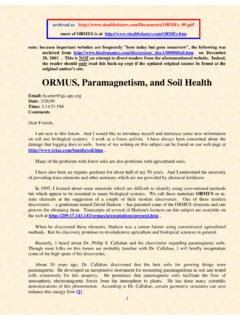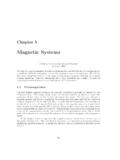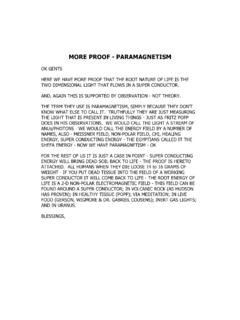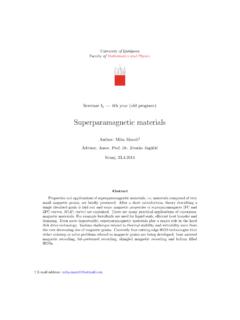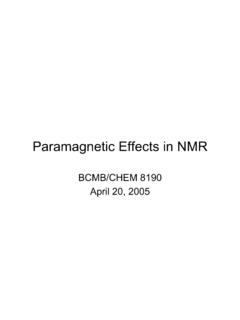Transcription of PHY331 Magnetism - University of Sheffield
1 PHY331 Magnetism Lecture 10 Last We saw that if we assume that the internal magnetic field is proportional to the magnetisation of the paramagnet, we can get a spontaneous magnetization for temperatures less than the Curie Temperature. We also found that the larger the field constant (relating internal field to magnetization), the higher the Curie Temperature. This A quick revision of the concept of the density of states of a free electron in a metal / semiconductor. Calculation of the paramagnetic susceptability of free electrons (Pauli paramagnetism ).
2 Will show that paramagnetic suceptability of free electrons is very small and comparable to their diamagnetic susceptability. Free electrons in a metal. We have distribution of electrons have different energy (E) and wavevectors (kx, ky, kz) Energy doesn t depend on the individual k values but on the sum of the squares, values which correspond to an energy less than Emax, are bounded by the surface of a sphere Emax is the Fermi energy EF and kF the Fermi wave vector Ek= 22mkx2+ky2+kz2() EF= 22mkF2 The Fermi wave vector depends only on the concentration of the electrons, as does (use deBroglie) re-arranging gives the number of states hence the density of states per unit energy range D(E) is, a parabolic density of states is predicted.
3 KF=3 2NV 13 EF= 22m3 2NV 23 N=V3 22mE 2 32 DE()=dNdE=V2 22m 2 32E12 The paramagnetic susceptibility of free electrons - Pauli paramagnetism The magnetic moment per atom is given by, For an electron with spin only, L = 0, J = S, S = , g = 2 The magnetic energy of the electron in a field B is, J=Jg B electron=122 B=1 B E= e Bor, parallel to the field and antiparallel to the field Add and subtract these energies from the existing electron energies in the parabolic bands E= BB E=+ BBPauli paramagnetism - the approximate method, at T = 0 K B B is typically very small in comparison with k TF B B << k TF The number of electrons transferred from antiparallel states to parallel states is, The magnetisation M they produce is, since each electron has 1 B, so each transfer is worth 2 B n n =D EF()
4 BB M=2 n B D EF()=DEF()2 M=2D EF() B2 Btherefore, and since obviously, and B = 0H we have, or, we can express D(EF) as, =MH= 0 B2 DEF() Pauli= 0 B2 DEF() DEF() 32 NEFso that, and using the fictitious Fermi temperature, EF = k TF then, Let us compare with the Curie s law behaviour (from Brillouin s treatment of the paramagnet) Pauli=3N 0 B22EF Pauli=3N 0 B22kTF=constantTF Curie= 0Ng2JJ+1() B23kTWhen J S, S , g 2 1) the paramagnetic susceptibility of the free electrons is smaller by a factor TF/T than the atomic moment model, with, TF 6 104 K and Troom 3 102 K 2)
5 The susceptibility is reduced by such a large factor, that it becomes comparable to the much smaller diamagnetic susceptibility of the free electrons, is Landau s result Curie= 0N B2kT diamag= 13 PauliSummary We saw how the application of a magnetic field resulted in an energy difference between electrons parallel and antiparallel to the magnetic field. This resulted in a transfer of electrons from antiparallel to parallel states, causing a net magnetisation. We could then derive an expression for the Pauli paramagnetic susceptability.
6 This predicted a susceptability similar to the diamagnetic susceptability of the free electrons.

